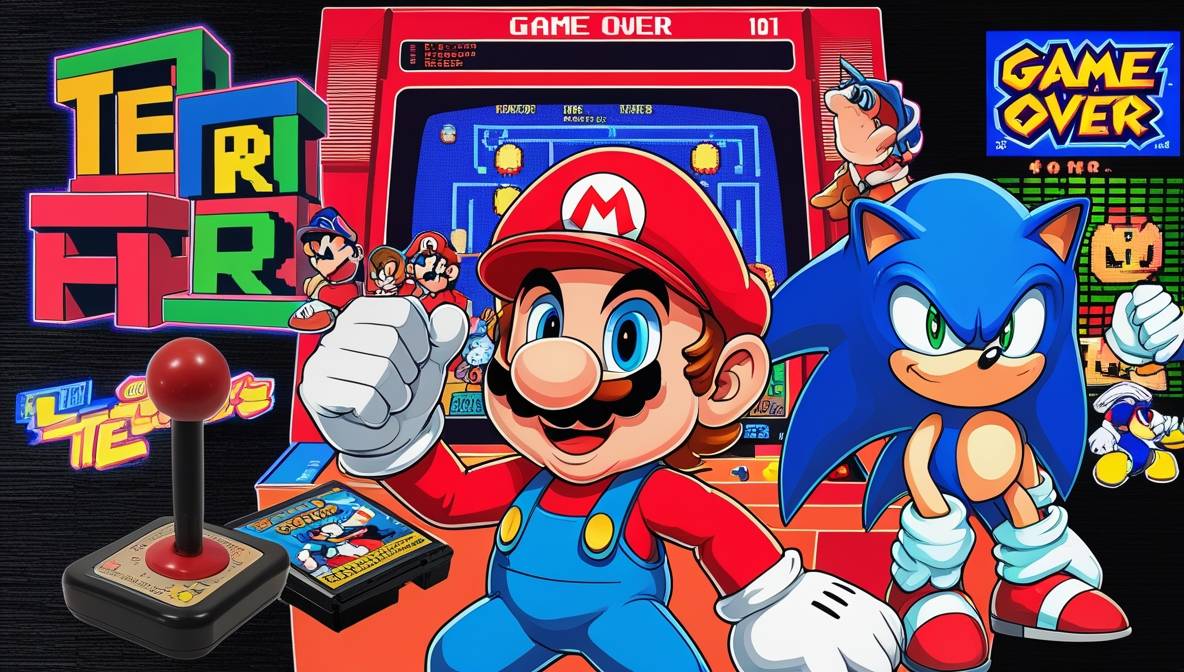The gaming industry evolves rapidly, but certain titles transcend time, offering experiences that remain engaging decades after their release. These games set benchmarks for design, storytelling, and innovation, earning their place as timeless classics. For enthusiasts exploring gaming history or newcomers seeking foundational titles, here are ten legendary games that continue to captivate players.
1. Tetris
Release Year: 1984 | Platform: Multiple
Alexey Pajitnov’s Tetris redefined puzzle games with its deceptively simple mechanics. Players arrange falling tetrominoes to complete lines, a concept that’s easy to grasp but challenging to master. Its addictive nature and universal appeal led to adaptations across consoles, mobile devices, and even arcade platforms.
Tetris’s cultural footprint extends beyond gaming—studies highlight its cognitive benefits, and its iconic theme music remains recognizable worldwide. The Game Boy version popularized handheld gaming, proving that great design transcends hardware limitations.
2. Super Mario Bros.
Release Year: 1985 | Platform: NES
Nintendo’s Super Mario Bros. revolutionized platformers with precise controls, imaginative levels, and charismatic characters. Mario’s quest to rescue Princess Toadstool introduced secrets like warp zones and power-ups, setting standards for level design.
The game revitalized the gaming industry post-1983 crash and spawned a franchise that dominates modern gaming. Its accessibility and charm make it a staple for retro enthusiasts and new players alike.
3. The Legend of Zelda: Ocarina of Time
Release Year: 1998 | Platform: Nintendo 64
Widely hailed as the greatest game ever made, Ocarina of Time pioneered 3D adventuring with its Z-targeting combat and sprawling dungeons. The story of Link’s journey through time to thwart Ganon remains emotionally resonant, while puzzles like the Water Temple challenge even seasoned players.
Its influence is evident in modern action-adventure titles, and the 2011 3DS remake introduced it to newer audiences. Discover more about its legacy in our history of video games post.
4. Pac-Man
Release Year: 1980 | Platform: Arcade
Pac-Man’s maze-chase gameplay turned it into a cultural phenomenon. The titular character and ghost adversaries (Blinky, Pinky, Inky, and Clyde) became pop culture icons, featured in merchandise, TV shows, and music.
Its simplicity and strategic depth—such as memorizing ghost patterns—keep it relevant in arcade collections and mobile ports.
5. Street Fighter II
Release Year: 1991 | Platform: Arcade
Capcom’s Street Fighter II defined competitive fighting games with its balanced roster and combo system. Characters like Ryu and Chun-Li became legends, while tournaments laid the groundwork for today’s esports scene.
The game’s emphasis on skill and strategy ensures its place in both casual and competitive circles.
6. Doom
Release Year: 1993 | Platform: PC
id Software’s Doom popularized the FPS genre with its fast-paced action and modding support. Players battled demons using weapons like the BFG 9000, while custom maps and mods extended its replayability.
Modern ports and the 2016 reboot prove its enduring appeal. Learn how FPS games evolved in our gaming evolution guide.
7. Final Fantasy VII
Release Year: 1997 | Platform: PlayStation
Square Enix’s epic RPG combined cinematic storytelling with the innovative Materia system. Cloud Strife’s battle against Shinra and Sephiroth tackled themes of identity and environmentalism, resonating deeply with players.
The 2020 remake modernized its visuals and combat, introducing it to a new generation. Explore more iconic RPGs on VipGame24.
8. Sonic the Hedgehog
Release Year: 1991 | Platform: Sega Genesis
Sonic’s speed-based gameplay challenged Mario’s platforming dominance. Loops, springs, and vibrant zones like Green Hill showcased the Genesis’s capabilities, while Dr. Robotnik’s machinations provided relentless challenges.
The Blue Blur remains a mascot for Sega and a fixture in gaming culture.
9. Super Metroid
Release Year: 1994 | Platform: SNES
This sci-fi masterpiece popularized the “Metroidvania” genre with its non-linear exploration and atmospheric storytelling. Players uncovered secrets in Zebes, battling aliens and acquiring upgrades like the Grapple Beam.
Its eerie ambiance and intricate map design inspire indie titles like Hollow Knight.
10. Half-Life
Release Year: 1998 | Platform: PC
Valve’s Half-Life revolutionized storytelling in FPS games with its seamless narrative and physics-based puzzles. Gordon Freeman’s fight through Black Mesa introduced scripted sequences and AI companions like Barney.
The game’s modding community birthed classics like Counter-Strike, cementing its legacy.
Why These Classics Matter
These games shaped the industry through innovative design, storytelling, and community engagement. They remind us that timeless gameplay transcends graphical advancements. Whether revisiting them or discovering them anew, these titles offer invaluable insights into gaming’s roots.
For more gaming insights, explore our guides on building a gaming PC or the most anticipated 2024 releases.

